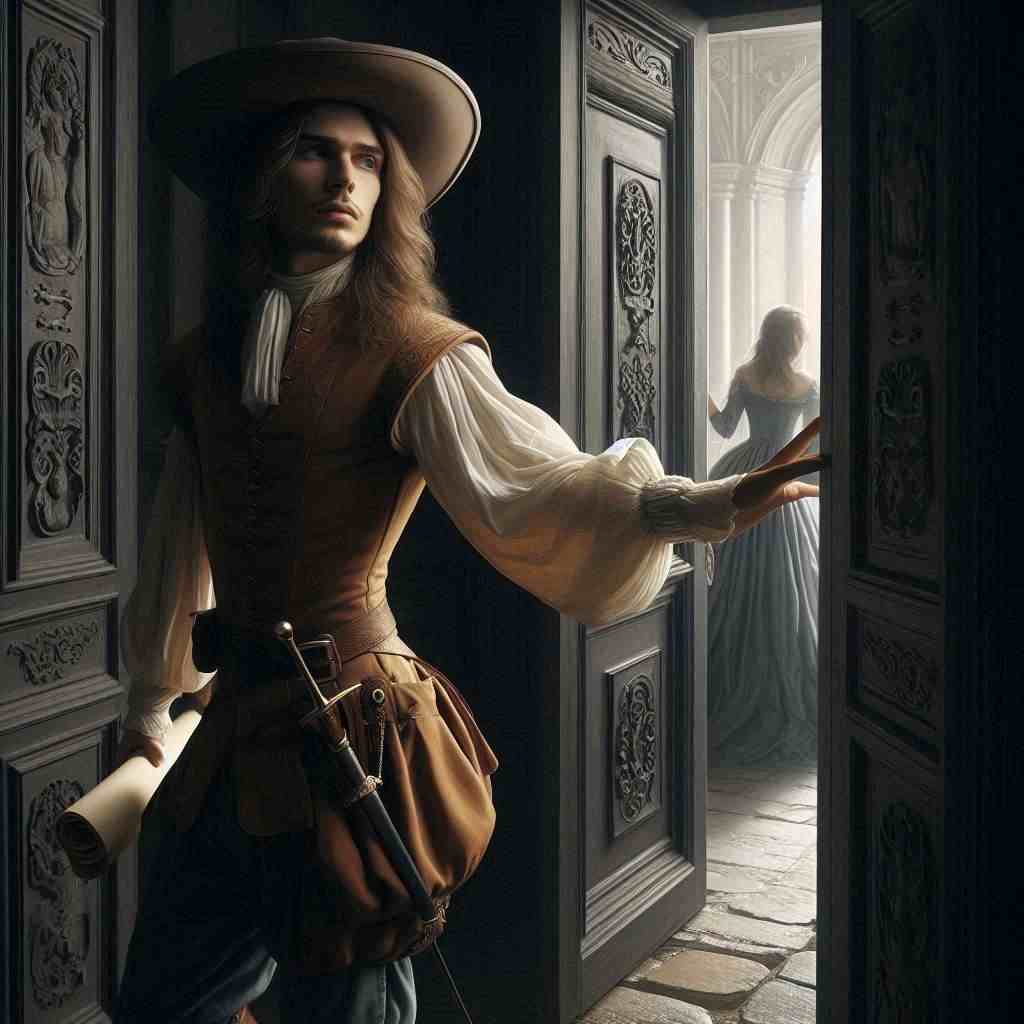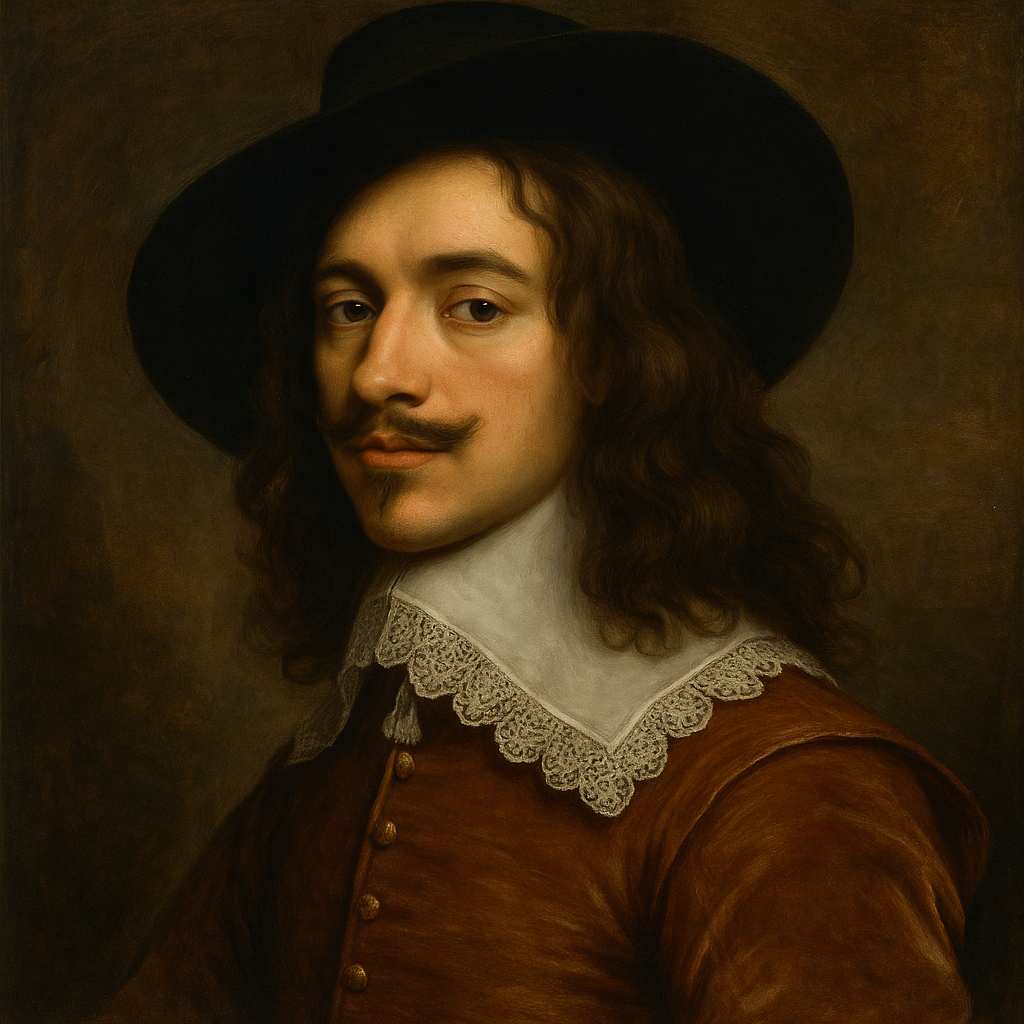To Lucasta, Going to the Wars
Richard Lovelace
1617 to 1657

Tell me not (Sweet) I am unkind,
That from the nunnery
Of thy chaste breast and quiet mind
To war and arms I fly.
True, a new mistress now I chase,
The first foe in the field;
And with a stronger faith embrace
A sword, a horse, a shield.
Yet this inconstancy is such
As you too shall adore;
I could not love thee (Dear) so much,
Lov’d I not Honour more.
Richard Lovelace's To Lucasta, Going to the Wars
Introduction
Richard Lovelace's "To Lucasta, Going to the Wars" stands as a quintessential example of Cavalier poetry, encapsulating the ideals of love, honor, and duty that were central to the literary and cultural ethos of 17th-century England. This twelve-line poem, with its deceptively simple structure, belies a complex interplay of emotions and societal expectations that continue to resonate with readers centuries after its composition. Through a careful examination of its form, language, and thematic content, we can uncover the layers of meaning embedded within this brief yet powerful work, and gain insight into the values and conflicts that shaped the Cavalier poets and their era.
Historical and Literary Context
To fully appreciate "To Lucasta," one must first understand the historical and literary context in which it was written. Lovelace, a prominent figure among the Cavalier poets, composed this work during the tumultuous period of the English Civil War. The Cavaliers, known for their loyalty to King Charles I and their adherence to courtly ideals, found themselves at odds with the Puritan-dominated Parliamentarians. This conflict not only divided the nation politically but also influenced the literary landscape of the time.
The Cavalier poets, including Lovelace, Robert Herrick, and Thomas Carew, were characterized by their embrace of classical forms, their celebration of love and beauty, and their commitment to honor and chivalric values. "To Lucasta" exemplifies these traits, presenting a speaker who must reconcile his love for a woman with his duty to fight for his king and country. This tension between personal desire and public obligation forms the central conflict of the poem and reflects the broader struggles faced by many in Lovelace's social circle during this period of upheaval.
Form and Structure
The poem's structure is deceptively simple, consisting of three quatrains with an alternating rhyme scheme (ABAB CDCD EFEF). This regularity in form contrasts with the emotional complexity of the content, creating a tension that mirrors the speaker's internal conflict. The use of iambic tetrameter in the first and third lines of each stanza, alternating with iambic trimeter in the second and fourth lines, creates a rhythmic pattern that echoes the beating of a heart or the march of soldiers, subtly reinforcing the poem's themes of love and war.
Lovelace's masterful use of enjambment, particularly in the first stanza, where sentences flow across line breaks, creates a sense of urgency and emotional continuity. This technique allows the poet to maintain the strict formal structure while imbuing the lines with a natural, speech-like quality that heightens the intimacy of the speaker's address to Lucasta.
Language and Imagery
The poem's language is characterized by its directness and emotional intensity, qualities that are hallmarks of Lovelace's style. The opening line, "Tell me not (Sweet) I am unkind," immediately establishes an intimate tone and suggests a dialogue between the speaker and his beloved. The parenthetical address "Sweet" serves to soften the imperative tone and emphasizes the tenderness underlying the speaker's apparent rejection of Lucasta's potential accusation.
Lovelace employs vivid imagery to contrast the peaceful domestic sphere with the violent world of warfare. The "nunnery / Of thy chaste breast and quiet mind" evokes a sense of sanctuary and purity, positioning Lucasta as a figure of virtue and tranquility. This imagery is juxtaposed with the martial language of "war and arms," "foe," and the triad of "sword, a horse, a shield," which represent the speaker's new calling.
The use of religious language, particularly in the description of Lucasta's breast as a "nunnery," adds a layer of complexity to the poem. It suggests that the speaker's departure is not merely a rejection of romantic love but also a kind of sacrilege, abandoning a sacred space for the profane world of war. This religious undertone is further developed in the second stanza, where the speaker describes embracing his military equipment "with a stronger faith," implying that his commitment to honor and duty has taken on a quasi-religious significance.
Thematic Analysis
At its core, "To Lucasta" grapples with the conflict between love and duty, a theme that resonates deeply with the Cavalier ethos. The speaker's decision to leave his beloved for war is presented not as a rejection of love, but as a higher expression of it. This paradoxical notion is encapsulated in the poem's famous final couplet: "I could not love thee (Dear) so much, / Lov'd I not Honour more."
The concept of honor, central to the Cavalier worldview, is presented here as the ultimate virtue, one that supersedes even romantic love. By framing his departure for war as an act of honor, the speaker attempts to reconcile his personal feelings with his public obligations. This reconciliation is not without tension, however, as evidenced by the speaker's need to justify his actions to Lucasta and, by extension, to himself.
Lovelace's treatment of love in the poem is multifaceted. While the speaker's affection for Lucasta is evident, there is also a suggestion of inconstancy in his embrace of a "new mistress" in the form of war. This metaphorical infidelity is then reframed as a form of constancy to a higher ideal. The poem thus presents a complex view of love that encompasses both personal affection and abstract principles.
The theme of transformation is also present throughout the poem. The speaker undergoes a change from lover to warrior, from a man defined by his relationship to Lucasta to one defined by his commitment to honor. This metamorphosis is presented as both necessary and ennobling, suggesting that true virtue requires sacrifice and the ability to transcend personal desires for the greater good.
Conclusion
"To Lucasta, Going to the Wars" stands as a masterpiece of Cavalier poetry, encapsulating the complex interplay of love, honor, and duty that characterized the literary and cultural milieu of 17th-century England. Through its skillful use of form, language, and imagery, the poem creates a powerful emotional resonance that continues to speak to readers across the centuries.
Lovelace's work invites us to consider the nature of love and commitment, challenging us to reconcile personal desires with broader social and moral obligations. The poem's enduring appeal lies in its ability to distill complex emotional and philosophical concepts into a brief, beautifully crafted lyric that speaks to universal human experiences.
As we reflect on "To Lucasta," we are reminded of the power of poetry to capture the essence of human conflict and aspiration. In its exploration of the tension between the personal and the public, the domestic and the martial, Lovelace's poem offers a timeless meditation on the nature of virtue and the sacrifices it demands. It stands as a testament to the enduring relevance of Cavalier poetry and its ability to illuminate the complexities of the human heart.
This text was generated by AI and is for reference only. Learn more
Want to join the discussion? Reopen or create a unique username to comment. No personal details required!



Comments
No comments yet. Be the first to comment!